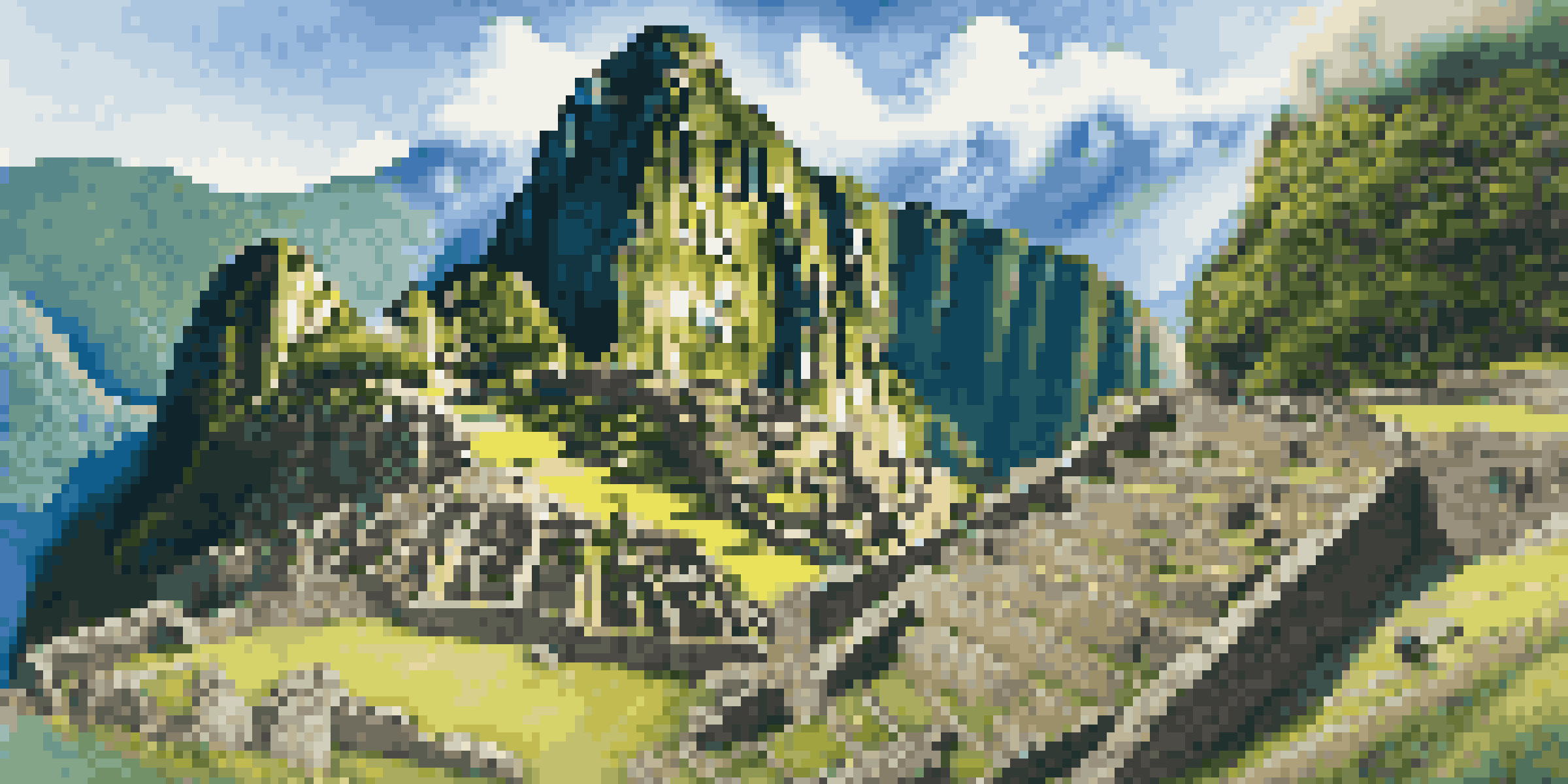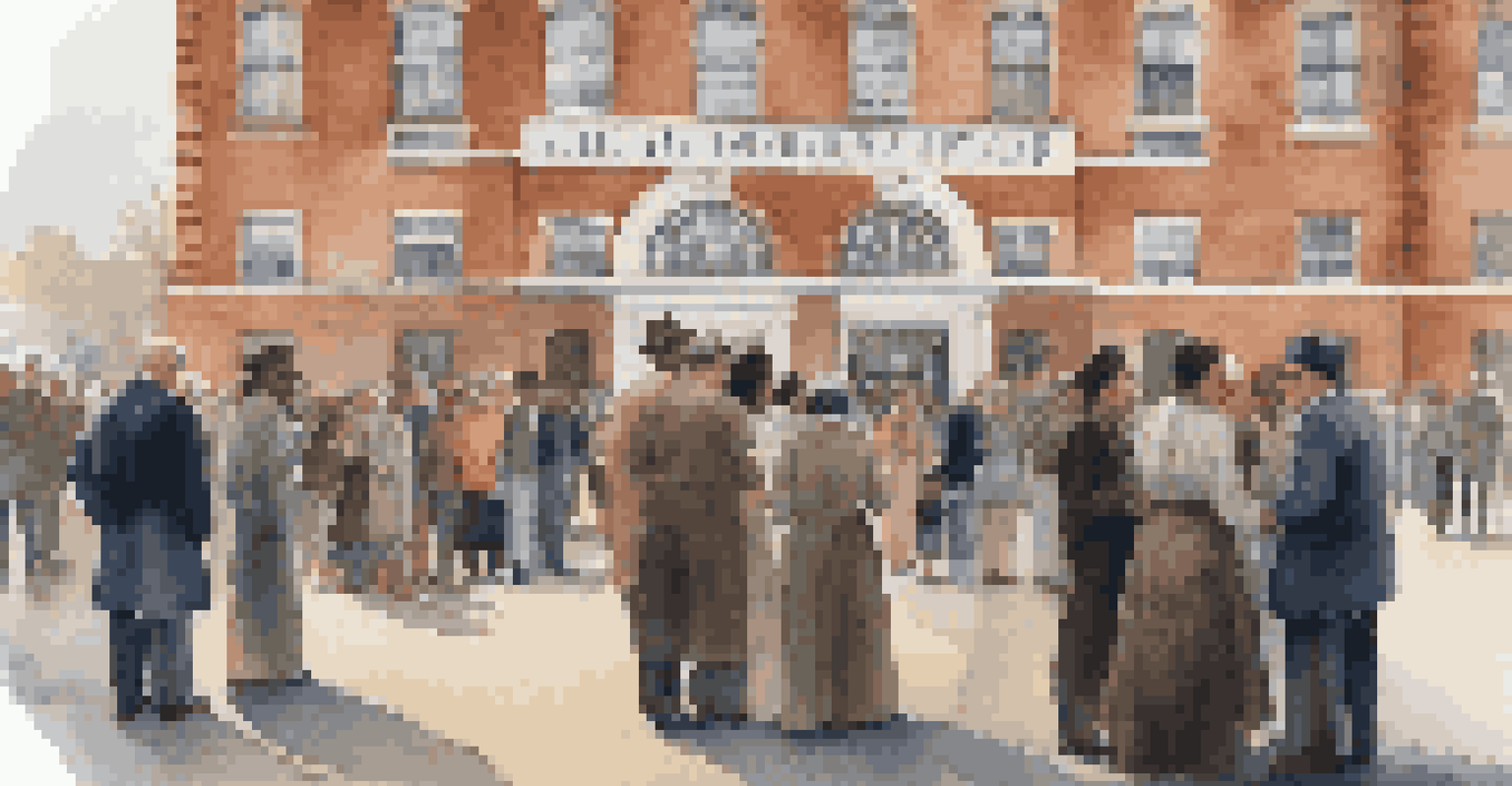Historical Sites: Immersing in the Stories of Local Cultures

The Importance of Historical Sites in Cultural Identity
Historical sites serve as tangible connections to the past, reflecting the essence of local cultures. They tell stories of triumph, struggle, and everyday life, allowing us to understand how communities evolved over time. By visiting these places, we not only learn about history but also about the values and traditions that shape current cultural identities.
The past is never dead. It's not even past.
For instance, a trip to the ancient ruins of Machu Picchu in Peru opens a window into the Incan civilization, showcasing their architectural prowess and spiritual beliefs. Similarly, visiting the historic neighborhoods of New Orleans reveals the complex tapestry of influences that have shaped its vibrant culture. These sites are not just landmarks; they are living narratives that invite us to engage with the past.
Moreover, as we immerse ourselves in these stories, we develop a greater appreciation for diversity and the shared human experience. Each historical site helps to foster connections between generations, reminding us that history is not just a series of dates and events but a rich narrative that continues to influence us today.
Learning Through Immersion: Engaging with Local Histories
Visiting historical sites allows for a hands-on approach to learning that textbooks simply can't replicate. Imagine walking through ancient streets, feeling the cobblestones under your feet, or standing in a grand hall where significant events unfolded. These experiences create vivid memories that deepen our understanding of local histories.

Take, for example, the experience of exploring the ruins of Pompeii. As you wander through the preserved streets and homes, you can almost hear the echoes of daily life before the catastrophic eruption of Mount Vesuvius. This immersive experience helps us to grasp the human stories behind the artifacts and architecture, making history come alive.
Historical Sites Build Cultural Identity
Visiting historical sites connects us to the past, enriching our understanding of local cultures and traditions.
Engaging with local guides can further enhance this experience. They often share personal anecdotes and lesser-known stories that add layers of context and meaning, allowing travelers to connect on a more intimate level with the site's significance.
Cultural Preservation: The Role of Historical Sites
Historical sites play a crucial role in cultural preservation, safeguarding the heritage and traditions of communities. As globalization continues to reshape societies, these sites serve as reminders of unique identities and practices that deserve to be celebrated and maintained. They are vital in fostering a sense of belonging and continuity among local populations.
We do not inherit the earth from our ancestors; we borrow it from our children.
For instance, the preservation efforts at sites like the Great Wall of China or the Acropolis in Greece not only protect these landmarks but also uphold the cultural narratives that they represent. These sites become focal points for community pride and education, ensuring that future generations understand their roots.
Additionally, many historical sites offer educational programs and workshops that engage locals and visitors alike. By participating in cultural activities, such as traditional crafts or culinary classes, we can experience the richness of local traditions firsthand, contributing to their ongoing preservation.
Connecting Generations: Historical Sites and Family Stories
Family stories often intertwine with historical sites, creating a bridge between generations. Visiting these locations can spark conversations about personal histories, deepening familial bonds as stories are shared and memories are created. This connection to the past fosters a sense of identity and belonging within families.
For example, a visit to Ellis Island can evoke stories of immigrant ancestors, allowing families to reflect on their heritage and the challenges their forebears faced. This shared experience not only honors those who came before but also instills a sense of gratitude and pride in the family narrative.
Tourism Boosts Local Economies
Historical tourism significantly contributes to local economies by supporting businesses and creating jobs.
Moreover, involving younger generations in these explorations encourages them to appreciate their heritage and understand the importance of preserving it. In doing so, we empower them to carry these stories forward, ensuring that history remains a living part of their lives.
The Economic Impact of Historical Tourism
Historical sites are often at the heart of tourism, contributing significantly to local economies. When tourists visit these locations, they not only engage with the culture but also support local businesses, from restaurants to craft shops. This economic boost helps communities thrive and maintain their cultural sites.
For instance, consider the impact of the Colosseum in Rome. Millions flock to this iconic site each year, generating revenue that supports not only the preservation of the Colosseum but also the local economy. Job creation in tourism, hospitality, and related industries is a direct benefit of historical tourism.
However, it's essential to balance tourism with preservation efforts. Communities must find sustainable ways to manage visitor numbers while protecting the integrity of their historical sites. By doing so, they can ensure that these treasures continue to educate and inspire future generations.
Challenges Facing Historical Sites Today
Despite their significance, many historical sites face challenges that threaten their preservation. Natural disasters, climate change, and urban development can all pose risks to these irreplaceable treasures. Addressing these issues is crucial to maintaining access to local cultures' stories.
For example, rising sea levels threaten coastal archaeological sites around the world, while pollution can degrade the integrity of structures like the Taj Mahal. These challenges highlight the urgent need for conservation efforts that prioritize both preservation and accessibility.
Preservation Faces Modern Challenges
Many historical sites are threatened by climate change and urban development, highlighting the need for conservation efforts.
Moreover, financial constraints often limit the resources available for maintenance and restoration. Communities and organizations must work together to advocate for funding and support to protect these vital links to our shared history.
Creating Meaningful Experiences at Historical Sites
To truly immerse ourselves in the stories of local cultures, we must engage with historical sites meaningfully. This can involve participating in guided tours, attending cultural events, or volunteering for preservation efforts. Each of these activities allows us to connect with the site on a deeper level.
For instance, taking part in a traditional ceremony at a historical site can provide insights into local customs and beliefs, enriching our understanding of the culture. Similarly, volunteering to help restore a local landmark can foster a sense of community and connection to the history being preserved.

Ultimately, the goal is to leave with more than just a collection of photos; it’s about gaining a newfound appreciation for the stories and traditions that shape our world. By prioritizing meaningful engagement, we ensure that our experiences at historical sites are not only memorable but also transformative.